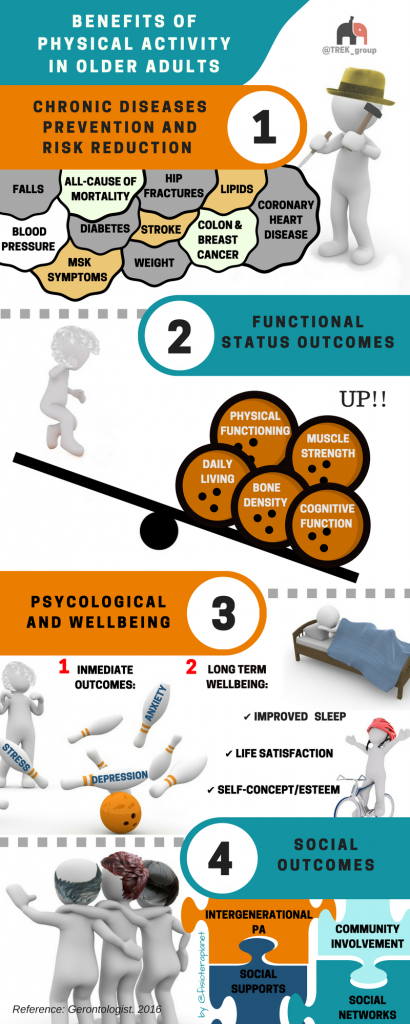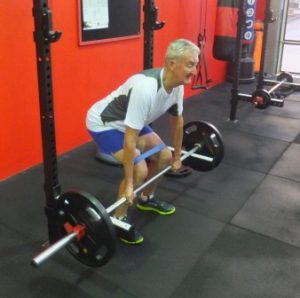
Older adult defined as ≥ 64 years+
- Muscle strength decreases by more than 10% each decade (Lynch, Metter et al. 1999)
- Weakness is associated with decreased bone mineral density (Bevier, Wiswell et al. 1989)
- Strength training is important to reverse these age-related changes
- Prevention over cure
- Recommended levels of physical activity for ≥ 64 years+
Assessment:
- Aerobic Endurance Test (with normative values for female and male)

Strength after Sixty:
“Doing squats won’t kill you even if you’re old”
Recommendations:
- Use functional strength training that incorporates balance and co-ordination
- Progressive overload – The muscles of older adults need to be challenged in order to grow just as the muscles of younger adult
- Neuromuscular training – take advantage coordination and complex movements to challenge the brain
- Movement standards refer to Exercise technique guidelines
Best Exercises:
- Double leg Bridge: neuromuscular training of the pelvic gluteal activation sequence as well as spinal articulation and control.

- Single Leg Bridge: Strength progression as well as isolation, balance and coordination.

- Squats: The Squat is very important movement to get right as it mimics sitting down, jumping and many everyday life movements you need in order to live!
- When you improve squat strength, you are developing strength in a sequence that the brain can immediately apply to similar movements, such as walking up stairs, because it shares a similar relative timing sequence.

- Deadlift: how often you would need to bend over in a day? We use this movement all the time and don’t think about it.
- Performing this exercise in a control environment can improve your everyday ability to pick something off the floor

Resistance program:
- Training program recommendations:
- 8-10 exercises
- 2 -3 sets of 6-12 repetitions of each exercise
- 70-80% of the one repetition maximum (1-RM)
- 2-3 times per week
- Program length: for periods ranging from six weeks to two years.
- Dosage and progression as per novices
- Slow progression for those with:
- Hypertension
- Arthritis
- cardiovasular disease
- other conditions that limit function
- Setting and supervision: initial instruction and performance in a supervised setting are important

